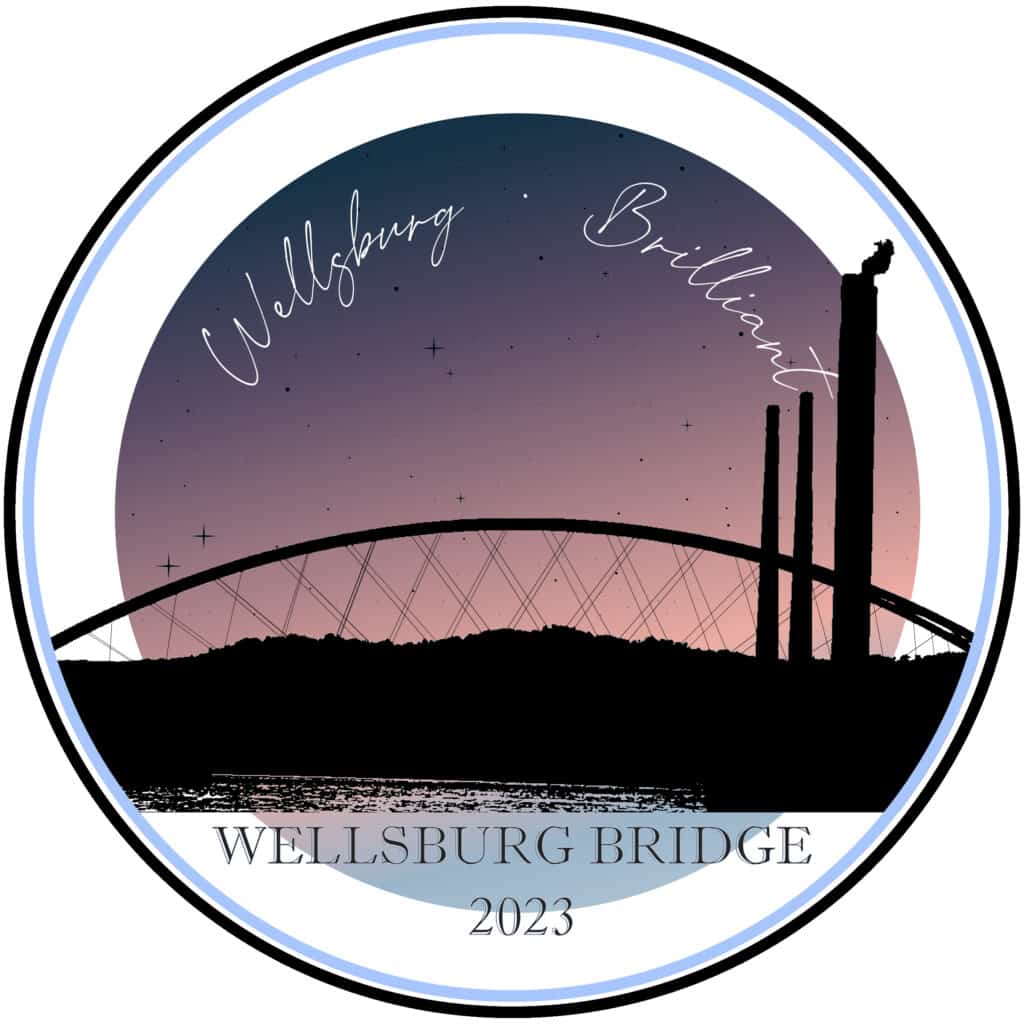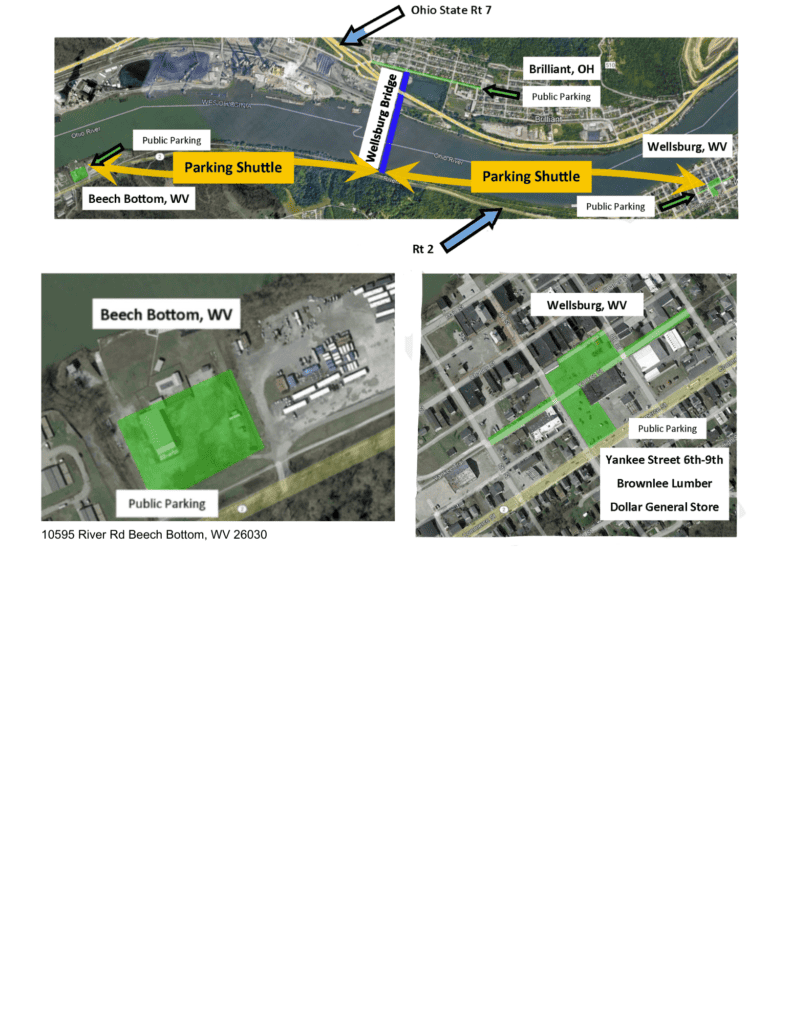Wellsburg Bridge Grand Opening

Grand Opening Set for September 20, 2023!
Celebration organized by the Wellsburg Chamber of Commerce.
In celebration of the completion of the Wellsburg Bridge it is our honor to announce it’s opening day. To recognize this momentous occasion for our communities the Wellsburg Chamber of Commerce has been working closely with numerous government and community organizations from both Ohio and West Virginia to provide this once-in-a-lifetime opportunity.
Click here to RSVP for Grand Opening Ceremony
Activities:
All Day: Food truck vendors. The Caffeinated Cow, Holey Rollers Donuts, Wellsburg Lions Club, Rusty Bull Tacos, Camarades: Mexican and Italian Food, and Ideal Provisions. Live entertainment is located in Center of the bridge. 106.3 The River radio station broadcasting live from the bridge all day.
8:00am: Bridge Run Would you like to be one of the first people to run or walk across the new bridge? A shuttle bus will be available for all runners/walkers at Yankee Street in Wellsburg between 7th and 9th street. (There will be signs for the shuttle). The bus will be at the site at 7:30am to pick up the runners/walkers. Please avoid the west side of the bridge after 8:30am. The car cruise vehicles will be lining up on the Ohio side of the bridge at this time.
10:30am: Classic Car Cruise There will be a classic car cruise in with an estimated 150 classic cars on the bridge from 10:30—6:00pm. All car entries will receive a dash plaque with bridge artwork and opening date. This event is in honor of the former Wellsburg Mayor Sue Simonetti who was instrumental in the bridge project. No cars will be permitted on the bridge until 8:30am and must arrive no later than 10:00am. Music for the cruise-in provided by DJ Spike Man.
10:50am: Presentation of Colours by the Osiris Shrine Legion of Honor and VFW
11:00am: Brooke High School Band to perform from 11:00am-11:20am
11:30am: Buckeye Local High School Band to perform from 11:30am-11:50
12:00pm: Grand Opening Ceremonies: National Anthem by Laurie Labishak. There will be a ceremony and ribbon cutting recognizing all those who made the bridge project possible. We have received word that Governor Justice will be in attendance.
12:30pm: Brooke High School Choir will sing “Country Roads”
2:00pm: Poor Man’s Heaven Band
4:00pm: The Next Band
6:00pm: Parade There will be a short parade on the bridge from Ohio to West Virginia starting at 3rd street in Brilliant, OH ending in Wellsburg at the intersection of the bridge and state Route 2.
A very special Thank You to these local restaurants for their contributions to the Wellsburg Bridge Opening Ceremonies:
Station Grille
Mark’s Carry Out
Drovers
Thank You to
Pastaio Cucina
For providing a luncheon for the dignitaries
Parking & Shuttle Service
Important Parking Updates, see below:
Due to limited parking on the WV side no public parking is permitted at the bridge site in WV. There are two designated public parking areas located in Beech Bottom and on Yankee Street in Wellsburg between 7th street and 9th street. There will be a free shuttle service running between these designated parking areas and the bridge site during the day of the event from 10am—7pm. On the Ohio side public parking is available at the bridge site in Brilliant at the Buckeye Local School Football Field. Shuttle Service will be provided.
*The Wellsburg bridge will be open for vehicle traffic on 9/21/2023

